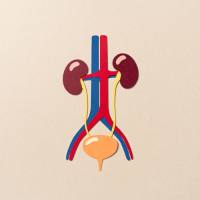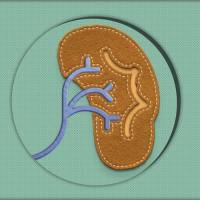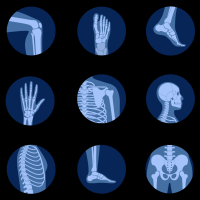【摘要翻译】由HLD指数确定的享受公费正畸治疗的合格标准
【作者】Jeff E. Theisa, Greg J. Huangb, Gregory J. Kingc, M. Lena Omnelld
【杂志】Am J Orthod Dentofacial Orthop. 2005 Dec;128:708-715
【英文摘要】Introduction: Access to orthodontic care for Medicaid patients has been limited, in part because of orthodontists’ reluctance to treat severe malocclusions for low reimbursements. Limited orthodontic treatment in the mixed dentition (phase 1 treatment) has been proposed to address this issue, because the intent of phase 1 treatment is to improve or prevent severe malocclusions. Orthodontists might be more willing to provide shorter, simpler treatment. The purpose of this study was to determine whether phase 1 treatment would reduce malocclusion severity to the extent that eligibility for subsequent Medicaid-funded treatment was significantly reduced. Methods: Eligibility was determined by the handicapping labiolingual deviation (HLD) index, which is used by several states for this purpose. Eligibility was also determined with the index of complexity, outcome, and need (ICON). This allowed us to compare these 2 indexes. Pre-phase 1 and post-phase 1 index scores were calculated by using study casts from 193 patients treated at the University of Washington orthodontic clinic and the Odessa Brown Children’s Dental Clinic, both in Seattle. Results: Using the HLD index, we found that eligibility for orthodontic treatment decreased by 62% after phase 1 treatment. This change was statistically significant at P < .0001. The ICON found significantly more treatment need before phase 1 (90%) than did the HLD index (35%) (P < .0001). Conclusions: Early interceptive treatment significantly reduces eligibility for comprehensive Medicaid-funded orthodontic treatment. The HLD index is a useful tool for determining Medicaid eligibility
【中文文题】由HLD指数确定的享受公费正畸治疗的合格标准
【中文摘要】
序言:享受政府医疗补助的患者获得的正畸治疗受到限制,部分原因在于正畸医师不愿为低额补贴治疗严重的错合畸形。我们建议通过混合牙列期有限的正畸治疗(1期治疗)解决这一问题,因为1期治疗的目的正是改善或防止严重的错合畸形。正畸医师或许更愿意做短期、简单的治疗。本研究目的在于确定1期治疗是否能将错合畸形的严重性改善到一定程度,从而减少后继的公费医疗需要。
方法:(公费医疗)合格标准由“不良唇舌向偏离(HLD)指数”确定,有数个州都将该指数用于此目的。另外,还通过“复杂性-疗效-需要指数(ICON)”确定合格标准,使我们能对此2种指数进行比较。使用在西雅图华盛顿大学正畸科和敖德萨布朗儿童牙科诊所治疗的193名患者的研究模型评价“1期前”和“1期后”指数分值。
结果:使用HLD指数,发现1期治疗后符合公费治疗标准者减少了62%,具有统计学意义(P < .0001)。根据ICON,1期前90%的儿童需要治疗,多于由HLD指数发现的35%,具有统计学意义(P < .0001)。
结论:早期干预治疗能减少公费系统正畸治疗需要,有统计学意义。HLD指数是确定公费治疗标准的有用工具。















































